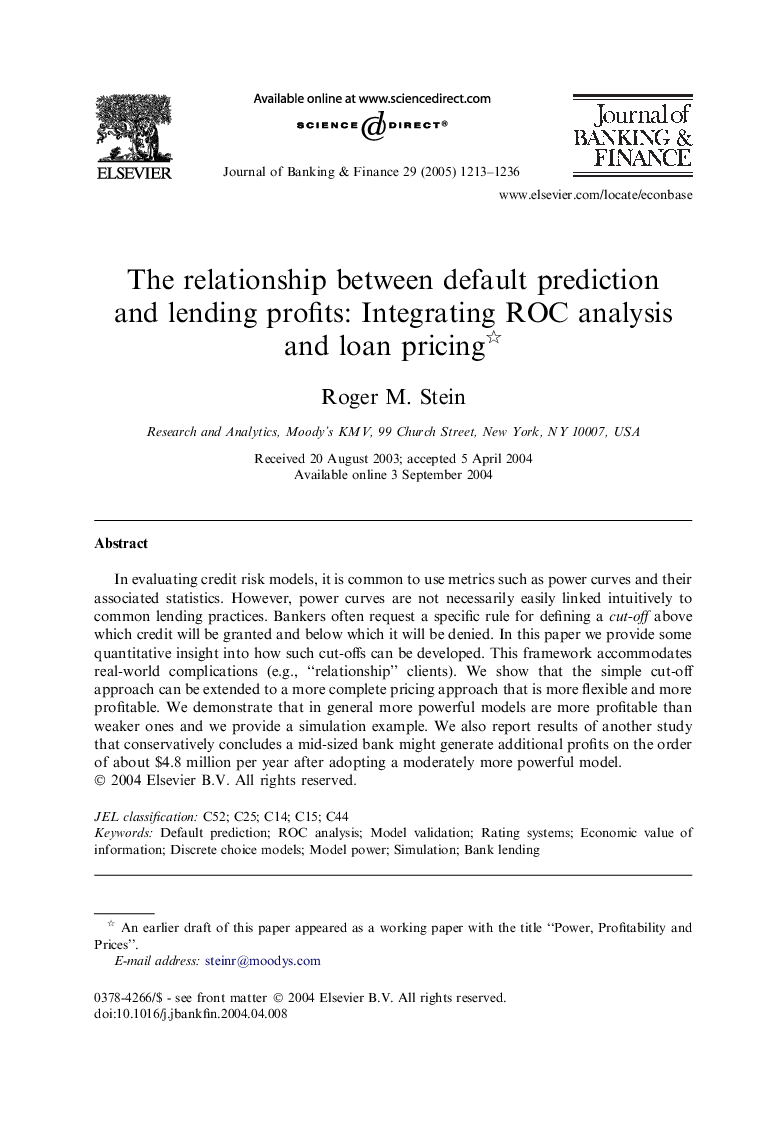| Article ID | Journal | Published Year | Pages | File Type |
|---|---|---|---|---|
| 9553889 | Journal of Banking & Finance | 2005 | 24 Pages |
Abstract
In evaluating credit risk models, it is common to use metrics such as power curves and their associated statistics. However, power curves are not necessarily easily linked intuitively to common lending practices. Bankers often request a specific rule for defining a cut-off above which credit will be granted and below which it will be denied. In this paper we provide some quantitative insight into how such cut-offs can be developed. This framework accommodates real-world complications (e.g., “relationship” clients). We show that the simple cut-off approach can be extended to a more complete pricing approach that is more flexible and more profitable. We demonstrate that in general more powerful models are more profitable than weaker ones and we provide a simulation example. We also report results of another study that conservatively concludes a mid-sized bank might generate additional profits on the order of about $4.8 million per year after adopting a moderately more powerful model.
Keywords
Related Topics
Social Sciences and Humanities
Economics, Econometrics and Finance
Economics and Econometrics
Authors
Roger M. Stein,
